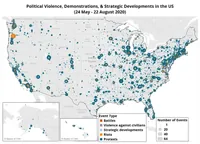Ethiopia's Debt Restructuring Journey: A Four-Year Timeline
Ethiopia's debt restructuring efforts from 2020 to 2024 involve IMF programs, currency float, and bondholder negotiations. The country faces challenges amid economic reforms and seeks to stabilize its finances.

Ethiopia, the oldest independent country in Africa and home to over 80 ethnic groups, has been navigating a complex debt restructuring process since 2020. This journey, set against the backdrop of the country's rich history and diverse landscape, has been marked by significant economic and political events.
The process began in November 2020, coinciding with the outbreak of conflict in the Tigray region. This internal strife, combined with the global COVID-19 pandemic, placed additional strain on Ethiopia's already challenged finances. Despite these obstacles, Ethiopia has continued to pursue economic reforms, leveraging its position as the largest economy in East Africa by GDP.
In January 2021, Ethiopia took a bold step by joining the G20's Common Framework initiative, designed to offer debt relief to developing economies. This move highlighted the country's commitment to addressing its financial challenges, even as it grappled with its complex internal dynamics.

The subsequent years saw Ethiopia engaging in ongoing discussions with the International Monetary Fund (IMF). These talks, which resumed in June 2022, were crucial for the country's economic stability. Ethiopia's efforts to secure international support were further evidenced in August 2023 when it obtained a debt servicing suspension from China, one of its key creditors.
However, the path to financial stability has not been without setbacks. In December 2023, Ethiopia defaulted on its $1 billion Eurobond, missing a $33 million coupon payment. This event underscored the severity of the country's financial challenges and led to a downgrade in its credit rating.
A pivotal moment came on July 29, 2024, when the Ethiopian central bank floated the birr currency. This decision, a key demand of the IMF, led to a sharp depreciation against the dollar. The birr, introduced as currency in 1893, has played a significant role in Ethiopia's economic history. Following this currency float, the IMF approved a four-year, $3.4 billion program, paving the way for further progress in Ethiopia's debt restructuring efforts.
The country's journey has not been without controversy. On August 14, 2024, a group of foreign bondholders expressed disappointment over the government's suggestion of a potential 20% principal haircut as part of the restructuring process. This reaction highlighted the delicate balance Ethiopia must maintain between addressing its debt issues and maintaining investor confidence.
Recent developments have shown promising signs. On September 27, 2024, the IMF announced a staff-level agreement with the Ethiopian government following the first review of the reforms program. This agreement could potentially unlock a $345 million disbursement, subject to IMF board approval.
In the latest move, on October 1, 2024, Ethiopia invited its bondholders to negotiate in parallel with official creditor talks, aiming to expedite the debt restructuring process. This invitation demonstrates Ethiopia's proactive approach to resolving its financial challenges.
Throughout this process, Ethiopia has continued to leverage its strengths, including its position as the world's fifth-largest coffee producer and its hosting of Ethiopian Airlines, Africa's largest airline. These assets, combined with the country's rich cultural heritage and natural resources, provide a foundation for future economic growth.
As Ethiopia moves forward with its debt restructuring efforts, it faces the challenge of balancing economic reforms with the needs of its diverse population. The country's journey serves as a testament to the complex interplay between economic policy, political stability, and international relations in the modern global economy.


































